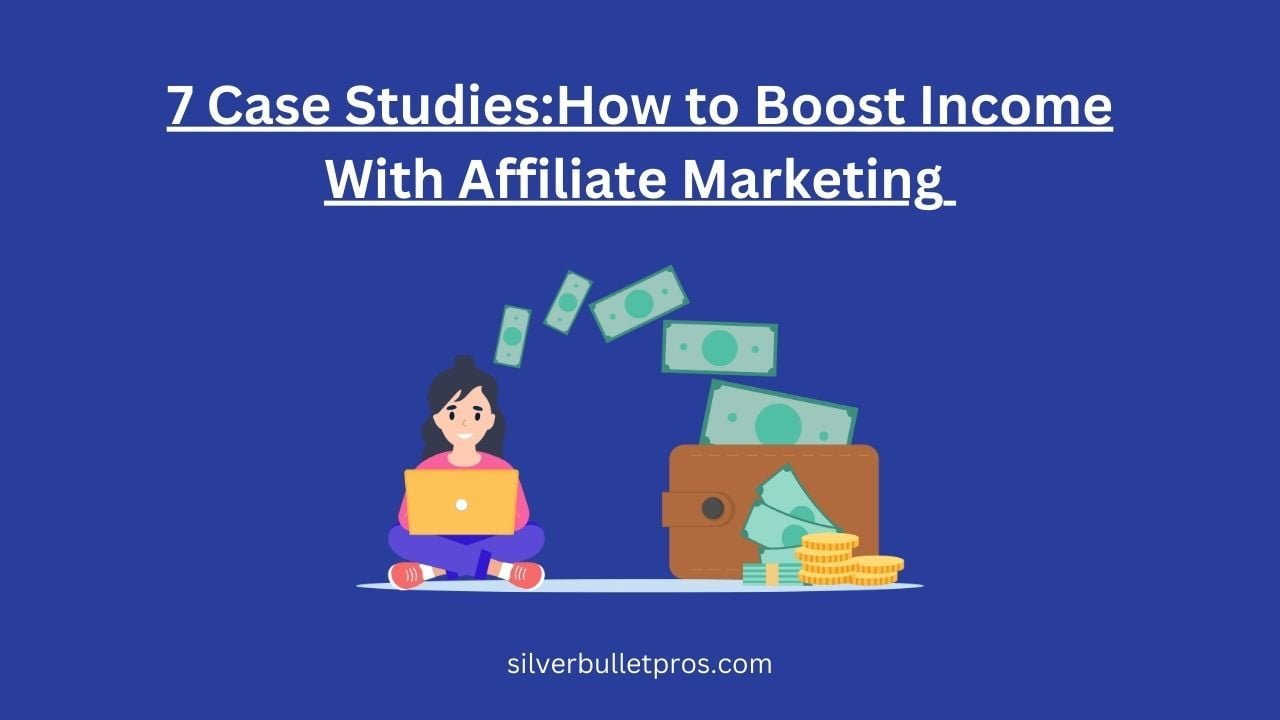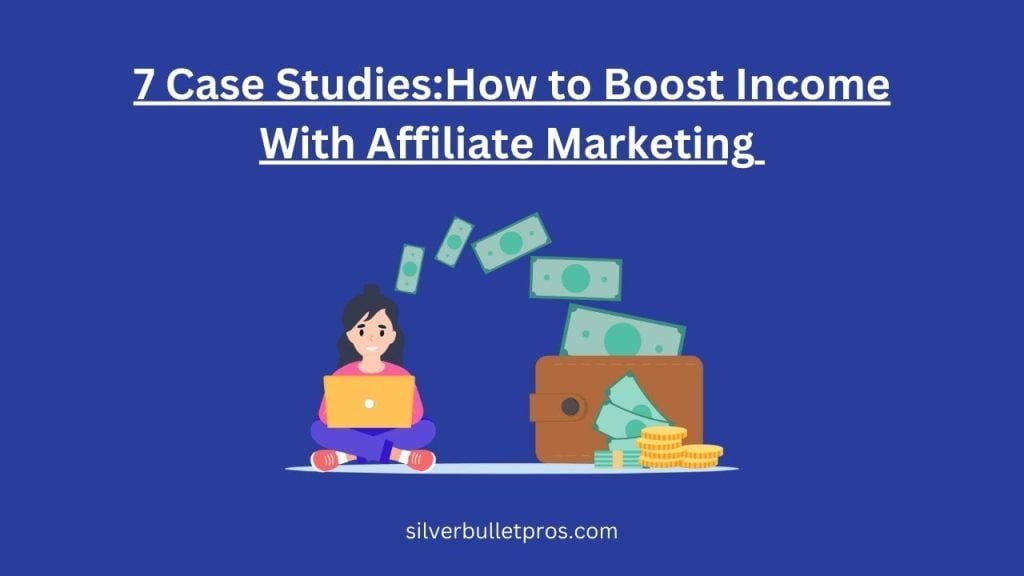

Affiliate marketing is a performance-based marketing strategy where individuals (affiliates) earn commissions by promoting and driving sales for a company's products or services. Affiliates use various online marketing tactics to attract potential customers and earn a percentage of each sale made through their unique referral links.
Affiliate marketing bridges the gap between product creators and consumers by leveraging the influence and reach of affiliates. This marketing model has become a significant revenue source for both businesses and individuals due to its low entry barriers and scalability.
What are the Benefits of Affiliate Marketing?
There are five key benefits of affiliate marketing:
- Low Startup Costs: Unlike traditional businesses, affiliate marketing doesn't require significant upfront investment.
- Passive Income: Once set up, it can generate revenue continuously with minimal ongoing effort.
- Flexibility and Freedom: Affiliates can work from anywhere and choose products that align with their interests.
- Scalability: Affiliates can scale their efforts by promoting multiple products or expanding to different niches.
- No Customer Support: Affiliates do not handle customer service or product delivery, allowing them to focus solely on marketing.
Affiliate marketing provides an accessible way for individuals to monetize their online presence and for businesses to expand their reach without the overhead costs of traditional advertising.
How to Start Affiliate Marketing
To start affiliate marketing, follow these seven essential steps:
- Choose a Niche: Focus on a specific area of interest to build a targeted audience.
- Select Affiliate Programs: Join reputable affiliate programs that offer products or services related to your niche.
- Build a Platform: Create a website, blog, or social media presence to promote your affiliate links.
- Create Quality Content: Develop engaging and valuable content to attract and retain your audience.
- Drive Traffic: Use SEO, social media, and other marketing strategies to bring visitors to your platform.
- Promote Affiliate Links: Integrate affiliate links naturally within your content.
- Analyze and Optimize: Monitor your performance and adjust your strategies to improve results.
Starting affiliate marketing involves careful planning and consistent effort to build a profitable and sustainable income stream.
How to Promote Affiliate Products
To effectively promote affiliate products, use the following five strategies:
- Content Marketing: Write blog posts, reviews, and tutorials that provide value and incorporate your affiliate links.
- Social Media Marketing: Share your content and affiliate links on social media platforms to reach a wider audience.
- Email Marketing: Build an email list and send regular newsletters featuring your affiliate products.
- Paid Advertising: Use Google Ads, Facebook Ads, or other paid advertising methods to drive targeted traffic.
- Influencer Collaborations: Partner with influencers in your niche to promote your affiliate products to their audience.
Promoting affiliate products requires a mix of organic and paid strategies to maximize reach and conversions.
What are the Best Affiliate Marketing Niches?
The top five affiliate marketing niches include:
- Health and Wellness: Products like supplements, fitness equipment, and health programs.
- Personal Finance: Credit cards, loans, and investment platforms.
- Technology: Gadgets, software, and tech accessories.
- Lifestyle and Hobbies: Fashion, travel, and home decor.
- Online Education: E-courses, certification programs, and e-books.
Choosing a profitable niche is crucial for success in affiliate marketing as it determines the potential audience and competition.
What are the Best Affiliate Marketing Programs?
Some of the best affiliate marketing programs are:
- Amazon Associates: Offers a vast range of products with a reliable tracking system.
- ShareASale: Features a wide variety of merchants and user-friendly interface.
- CJ Affiliate: Known for high-quality brands and robust reporting tools.
- Rakuten Marketing: Provides access to premium brands and advanced analytics.
- ClickBank: Specializes in digital products with high commission rates.
Selecting the right affiliate program can significantly impact your earning potential and marketing success.
What are the Common Mistakes to Avoid in Affiliate Marketing?
Avoid these seven common mistakes in affiliate marketing:
- Choosing the Wrong Niche: Select a niche you are passionate about and that has a profitable market.
- Neglecting Content Quality: Produce high-quality, valuable content to build trust with your audience.
- Overloading with Affiliate Links: Use affiliate links sparingly to avoid overwhelming your audience.
- Ignoring SEO: Optimize your content for search engines to attract organic traffic.
- Not Tracking Performance: Use analytics tools to monitor your performance and make data-driven decisions.
- Avoiding Email Marketing: Build an email list to nurture relationships and drive sales.
- Not Diversifying Traffic Sources: Relying on one traffic source can be risky; diversify to ensure stability.
By avoiding these mistakes, you can increase your chances of success in affiliate marketing.
1. Choose a Niche That You're Interested In
To choose a niche, focus on areas you are passionate about. This will keep you motivated and make your content more authentic. For example, if you love fitness, you could promote workout gear, supplements, or online fitness courses.
2. Build a Valuable Website or Blog
Building a website or blog provides a platform to share your content and affiliate links. Use WordPress for an easy setup and choose a domain name that reflects your niche. Your site should offer valuable information that attracts and retains visitors.
3. Create Unique and Engaging Content
Creating unique and engaging content involves writing blog posts, making videos, or podcasting about topics in your niche. For example, a blog post reviewing the top 10 fitness trackers can include affiliate links to each product.
4. Promote Your Affiliate Links on Social Media
Promote your affiliate links on social media by sharing your blog posts, creating eye-catching graphics, and engaging with your audience. Platforms like Instagram, Facebook, and Pinterest can drive significant traffic to your site.
5. Use Email Marketing to Nurture Your Audience
Use email marketing to nurture your audience by sending regular newsletters with valuable content and affiliate promotions. Build your email list with opt-in offers like free eBooks or exclusive discounts.
6. Join Affiliate Networks and Programs
Join affiliate networks and programs to access a variety of products and services. Networks like ShareASale and CJ Affiliate provide a range of options, while specific programs like Amazon Associates offer a broad product selection.
7. Track Your Results and Make Adjustments
Track your results using tools like Google Analytics and affiliate program dashboards. Analyze your data to understand what works and make adjustments to improve your strategies. For example, if a particular type of content drives more sales, focus on creating similar content.
By following these strategies, you can effectively boost your income with affiliate marketing. The key is to remain consistent, monitor your performance, and continuously optimize your efforts to achieve better results.
What are the most successful affiliate marketing strategies highlighted in these case studies?
The case studies likely highlight successful strategies like building niche authority sites, email marketing, influencer marketing, and leveraging social media/video platforms.
How much income potential exists for affiliate marketers based on the examples provided?
Based on the high-earning case studies profiled, affiliate marketers could potentially earn four to six figures per month in revenue.
Which affiliate networks or merchant programs were leveraged in these high-earning case studies?
Common affiliate networks like Amazon Associates, ShareASale, CJ Affiliate, and merchant programs for major brands were likely utilized.
What types of websites/traffic sources drove conversions for the affiliate marketers profiled?
High-converting traffic likely came from sources like niche blogs, YouTube channels, social media influencers, and email lists.
Are there any common mistakes to avoid when trying to replicate the success seen in these case studies?
Potential mistakes could include lacking niche focus, poor content quality, not building an email list, and neglecting to diversify traffic sources.